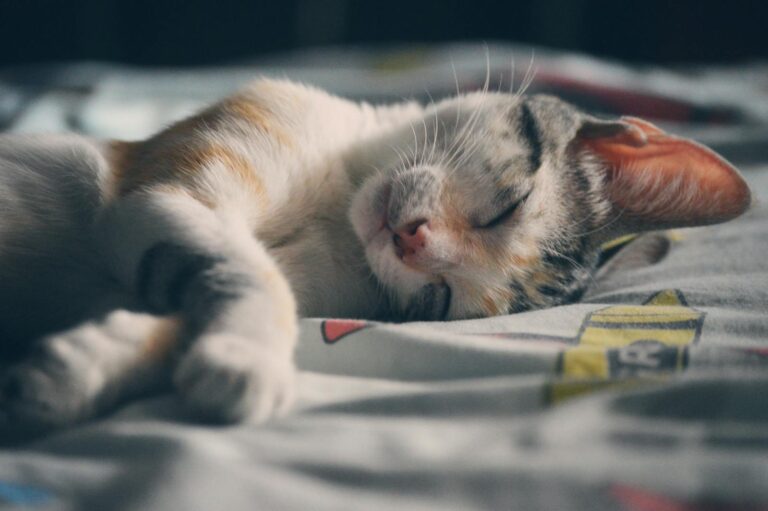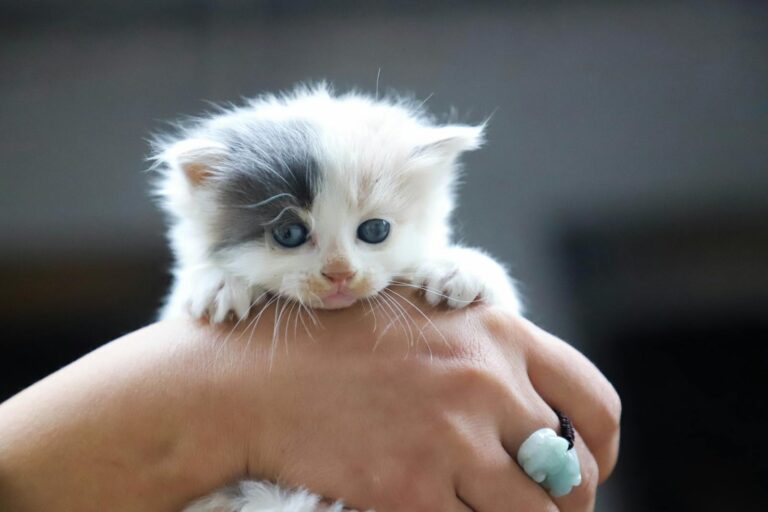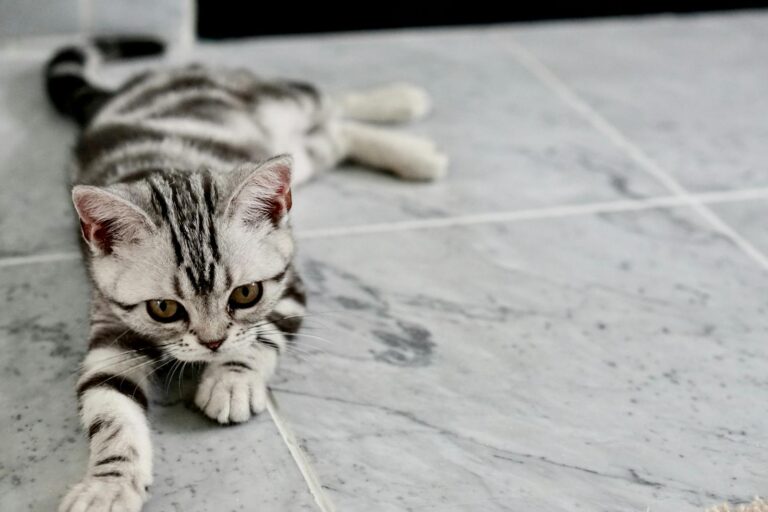Cat-Proofing Your Home – A Complete Checklist for Safety and Comfort
If you’re a cat owner, you know that our feline friends are curious, playful, and sometimes a little mischievous. “Cat-Proofing Your Home: A Complete Checklist” serves as an essential guide to ensuring your living space is safe and comfortable for your furry companion while keeping your belongings intact.
Understanding Your Cat’s Behavior: Why Cat-Proofing is Essential
Cats are inherently curious creatures. They explore their environment instinctively, often leading them into potentially hazardous situations. Understanding this behavior is critical in creating a safe home for them.
The Nature of Cats
Cats have evolved as both predators and prey, which means their instincts drive them to explore, climb, and sometimes get into trouble. Their curiosity leads them to investigate every nook and cranny of your home, which can result in accidents or damage to your property.
An important part of understanding your cat’s behavior is recognizing that their actions are often rooted in survival instincts. For example, when they scratch furniture, it may be an attempt to sharpen their claws, mark territory, or relieve stress. Recognizing these natural behaviors allows you to find constructive ways to manage them.
Why Cat-Proofing Matters
Cat-proofing is not merely about preventing damage; it’s also about creating a nurturing environment where your pet can thrive. By addressing safety concerns proactively, you reduce the risk of injuries, poisoning, or accidents. In addition, a cat-proofed home helps minimize stress for both you and your pet, making for a harmonious household.
Just like child-proofing a home for a toddler, cat-proofing is a way to show love and consideration for your feline friend. It ensures they have freedom and security in their environment without compromising their well-being.
The Consequences of Neglecting Safety
Failing to cat-proof your home can lead to a range of unfortunate consequences. From broken valuables and chewed cords to accidental poisoning from harmful substances, the stakes are high. Moreover, an unsafe home can lead to stress and anxiety for your cat, resulting in behavioral issues such as aggression or litter box problems.
Taking the time to implement a comprehensive cat-proofing strategy will pay off in the long run, fostering a calm, safe, and loving atmosphere for both you and your kitty.
The Ultimate Cat-Proofing Checklist: Room-by-Room Guide
Creating a cat-proof home means tackling each room with specific considerations in mind. This checklist will help you remember crucial aspects of cat-proofing in various areas of your house.
Living Room Precautions
The living room is often the heart of the home where both humans and cats spend considerable time. Here are some considerations to keep it safe:
- Furniture Arrangement: Ensure that any heavy items are secured and that there are no sharp edges. Use fabric protectors and consider covering delicate pieces with throws.
- Houseplants: Many common plants are toxic to cats. Avoid placing them in areas accessible to your cat. Consider using cat-friendly plants, like catnip or spider plants, instead.
- Cords and Wires: Hide electrical cords and cables, possibly using cord covers. Chewing on cords can lead to severe injuries or even electrocution.
A thoughtful arrangement of the living room can create an engaging yet safe space for your cat to lounge and play.
Kitchen Safeguards
Kitchens pose unique challenges due to the presence of potentially dangerous items. Here’s how to mitigate risks:
- Cabinet Locks: Install locks on kitchen cabinets to keep cleaning supplies, utensils, and food out of reach. This prevents accidental ingestion of harmful substances.
- Countertops: Keep countertops clear of tempting food items and hazardous materials. Cats are adept at leaping onto surfaces, so vigilance is key.
- Trash Management: Use trash cans with secure lids to deter your cat from rummaging through the garbage. Consider a locked cabinet for compost bins as well.
By prioritizing safety in the kitchen, you ensure that meal prep and culinary creativity can happen without fear of feline interference.
Bedroom Safety Measures
Your bedroom should be a sanctuary for both you and your cat. Here’s how to maintain that peace:
- Clothing Storage: Store clothing and accessories in drawers rather than leaving them on chairs or floors. Cats often enjoy burrowing into warm, soft items.
- Window Screens: Make sure that windows are secured with screens to prevent your cat from jumping out or falling.
- Personal Belongings: Be wary of small items like jewelry or medication. These can easily become choking hazards or cause digestive issues if ingested.
Creating a cat-friendly bedroom not only protects your belongings but also provides comfort for your feline friend who loves to curl up next to you.
Protecting Furniture and Belongings: Scratching, Chewing, and Climbing Solutions
Furniture and belongings are often victimized by cats’ instinctual scratching, chewing, and climbing behaviors. Finding effective solutions can save your possessions while keeping your cat engaged.
Understanding Scratching
Scratching is a natural behavior for cats, serving multiple purposes. It helps them stretch, mark territory, and shed old claw sheaths. Here’s how to address it:
- Provide Alternatives: Invest in various scratching posts and pads made of different materials — sisal, cardboard, and carpet. Place them in areas where your cat frequently scratches.
- Use Deterrents: If your cat targets specific furniture, use sprays designed to deter scratching. Additionally, double-sided tape can discourage them from scratching non-target areas.
- Regular Trimming: Keeping your cat’s claws trimmed reduces damage to your furniture. Regular nail trimming sessions can be a bonding experience and ensure their claws remain manageable.
Understanding your cat’s scratching habits will help you redirect their energy towards appropriate outlets.
Chewing Prevention
Cats occasionally chew on inappropriate objects out of boredom or curiosity. Here are tips to tackle this behavior:
- Remove Temptations: Keep items like rubber bands, strings, and plastic wrappers out of reach. These can present choking hazards or cause intestinal blockages.
- Engage in Play: Interactive toys can significantly reduce your cat’s inclination to chew on non-food items. Spend quality time playing with your cat to burn off excess energy and satisfy their playful nature.
- Offer Edible Chews: Providing specific chew toys designed for cats can satisfy their chewing instincts. Look for products made from cat-safe materials.
By addressing your cat’s chewing habits, you can prevent potential health hazards and encourage safer alternatives.
Climbing Solutions
Cats are natural climbers and often seek high ground to observe their surroundings. However, this can lead to precarious situations. To manage this:
- Cat Towers and Shelves: Invest in multi-level cat towers or wall-mounted shelves to give your cat safe climbing opportunities while keeping them off furniture and shelves.
- Secure Breakables: Ensure that fragile items are placed on sturdy surfaces out of reach. Wall-mounted shelves should be anchored securely to avoid accidents.
- Monitor High Spaces: Be mindful of where your cat likes to climb. Keep windows secured to prevent falls and check that any high spaces do not have sharp edges.
Providing safe climbing options will help satisfy your cat’s natural instincts while protecting your belongings.
Securing Hazardous Items: Cleaning Supplies, Medications, and Electrical Cords
One of the most crucial aspects of cat-proofing your home involves securing hazardous items. Cats are curious and may inadvertently expose themselves to danger.
Cleaning Supplies
Many household cleaning products contain chemicals that are harmful to pets. Here’s how to ensure safety:
- Store Properly: Always keep cleaning supplies in locked cabinets or on high shelves. Consider using childproof locks to prevent access.
- Choose Pet-Safe Products: Opt for eco-friendly or pet-safe cleaning products whenever possible. Not only are they safer for your cat, but they’re also better for the environment.
- Dilution and Ventilation: If you need to use harsh chemicals, make sure to dilute them and ventilate the area well to reduce exposure risks.
Keeping cleaning supplies out of reach will help create a safer home environment for your curious kitty.
Medications
Human medications can be particularly dangerous to cats. Here’s how to manage this risk:
- Medication Storage: Store all medications in cabinets that are inaccessible to your cat. Also, make sure that any pill bottles are tightly sealed.
- Educate Yourself: Know which human medications are toxic to cats. For instance, acetaminophen and ibuprofen can be fatal. Always consult your veterinarian before giving any medication to your cat.
- Emergency Contact Information: Keep contact information for your veterinarian and local emergency animal clinic handy in case of accidental ingestion.
By taking precautions with medications, you can effectively safeguard against potential emergencies.
Electrical Cords and Devices
Electrical cords and devices present significant hazards that require attention. Here’s how to mitigate risks:
- Cord Covers: Use cord management solutions to cover wires and cables. This prevents chewing and minimizes the risk of electrical shock.
- Keep Out of Reach: Position furniture to obstruct access to power strips and sockets.
- Unplug Unused Equipment: Whenever possible, unplug devices that are not in use.
Taking proactive steps to manage electrical hazards will contribute to a safer home for both you and your cat.
Creating a Cat-Friendly Environment: Enrichment and Mental Stimulation
While safety is paramount, creating a nurturing and stimulating environment is equally vital for your cat’s happiness. A well-rounded home supports their physical and mental well-being.
Enriching Play Areas
Cats need stimulation to prevent boredom, which can lead to behavioral issues. Here’s how to create engaging play areas:
- Diverse Toys: Provide a mix of interactive toys, feather wands, laser pointers, and puzzle feeders. Each type of toy serves different needs and keeps your cat engaged.
- Rotate Toys: Keep things fresh by rotating toys regularly. This maintains their interest and excitement for playtime.
- Safe Outdoor Access: If feasible, consider creating a catio (an enclosed outdoor space) where your cat can safely enjoy the outdoors. Supervised outdoor time can provide valuable enrichment.
Creating diverse play areas will ensure your cat remains engaged and mentally stimulated.
Safe Hiding Spots
Cats love to hide and observe their surroundings from secluded spots. Here’s how to provide safe hiding spots:
- Boxes and Cubes: Create cozy spaces using boxes or cat cubes. Line them with blankets to make them inviting.
- Under Furniture: Make sure there are safe spaces under furniture where your cat can retreat. This can serve as a comforting hideaway when they feel overwhelmed.
- Tunnels and Cat Trees: Investing in tunnels or cat trees allows for exploration and security, satisfying your cat’s instinct to hide and pounce.
These hiding spots provide security and comfort, allowing your cat to engage in natural behaviors.
Interactive Enrichment
Interactive sessions can greatly enhance your cat’s quality of life. Consider incorporating the following elements:
- Training Sessions: Teaching your cat tricks or commands can stimulate their mind and build your bond. Use positive reinforcement techniques to encourage learning.
- Puzzle Feeders: These feeders challenge your cat’s problem-solving abilities while rewarding them with treats. Not only are they engaging, but they also slow down fast eaters.
- Social Interaction: Spend time cuddling, grooming, or simply talking to your cat. Social interaction is vital for their emotional well-being.
Creating interactive experiences fosters a strong bond between you and your cat while keeping their minds active and engaged.
Maintaining a Cat-Proofed Home: Regular Checks and Adaptations
Once you’ve implemented cat-proofing measures, it’s essential to maintain and adapt your efforts. Regular checks ensure that your home remains a safe haven for your furry friend.
Routine Inspections
Conducting routine inspections should be part of your cat-care regimen. Consider the following:
- Monthly Walkthroughs: Schedule monthly walkthroughs of your home to assess potential hazards. Look for new plant acquisitions, changes in furniture layout, or any emerging dangers.
- Evaluate Scratching Posts: Over time, scratching posts may wear down. Assess whether they still serve their purpose and replace or repair them as needed.
- Safety Adjustments: As your cat grows and matures, their behaviors may change. Stay vigilant and adapt safety measures accordingly.
Regular inspections will help maintain a cat-proof environment, adapting to your cat’s evolving needs.
Staying Informed
Staying informed about cat safety is crucial. Here are some ways to keep learning:
- Veterinary Advice: Regular consultations with your veterinarian can provide insights into your cat’s changing needs, dietary concerns, and general health.
- Community Resources: Engage with local pet communities, online forums, or social media groups to share ideas and learn from fellow cat owners.
- Books and Articles: Read books and articles devoted to cat care and behavior to expand your knowledge base. This will empower you to make informed decisions for your pet.
Continually educating yourself will help you stay ahead of potential hazards and improve your cat’s quality of life.
Adapting to Changes
Life changes can impact your cat’s environment. Consider these adjustments:
- New Family Members: If you adopt another cat or bring a new family member into the home, reassess your cat-proofing strategies to accommodate new dynamics.
- Home Renovations: Any renovations or moving activities can introduce new hazards. Revisit safety measures after such changes occur.
- Behavioral Shifts: Monitor for changes in your cat’s behavior, which may indicate the need for additional adjustments to their environment.
Being adaptable ensures that your home remains a safe and supportive space for your ever-evolving feline companion.
Conclusion
Creating a cat-proof home involves understanding your cat’s behaviors and putting thoughtful measures in place. From safeguarding your belongings to providing enriching environments, you can create a safe haven that nurtures your cat’s instincts and enhances their quality of life. Embracing this journey not only protects your home but also strengthens the bond between you and your feline friend. Through regular checks and adaptations, you can maintain a peaceful coexistence, ensuring your home remains a joyful sanctuary for both you and your beloved pet.







